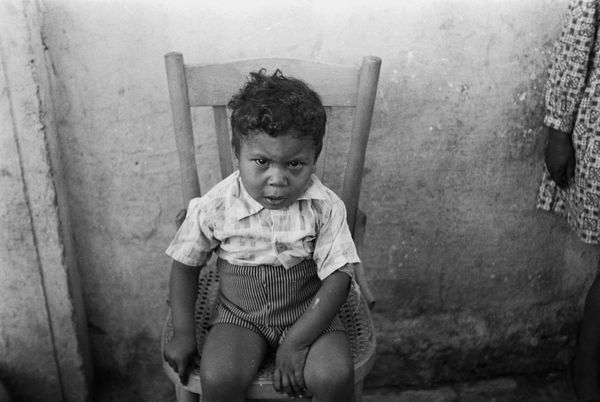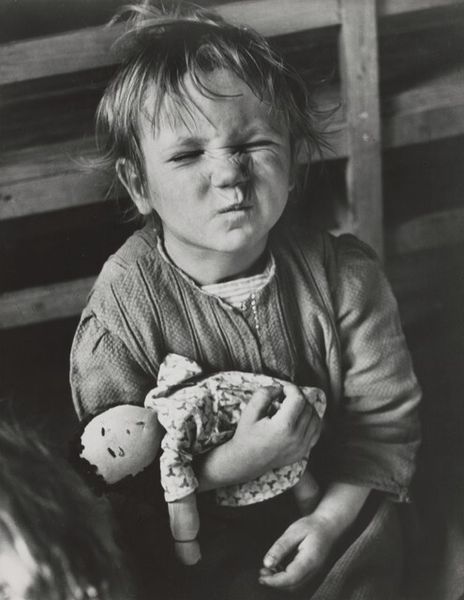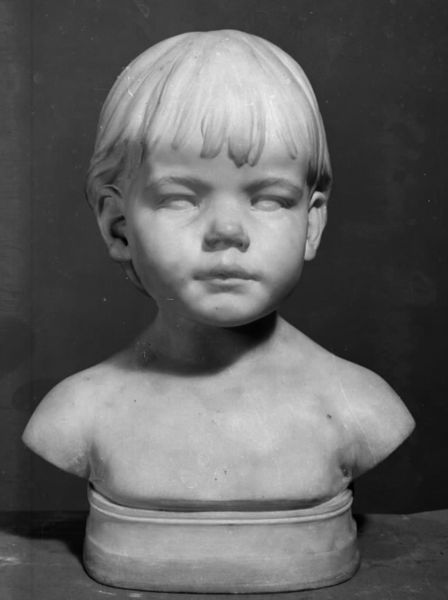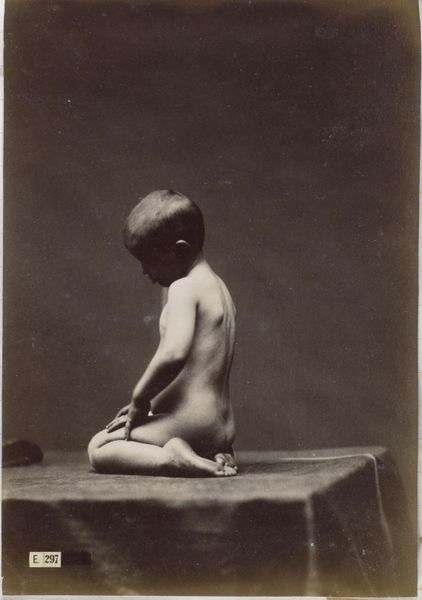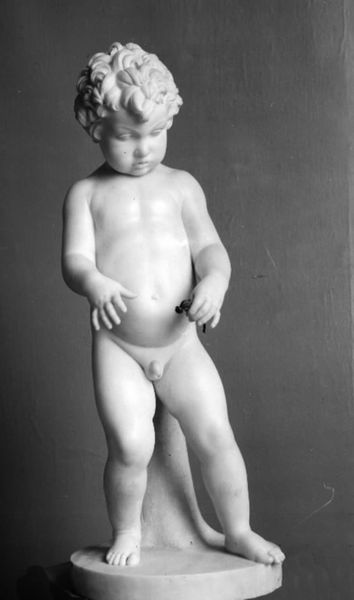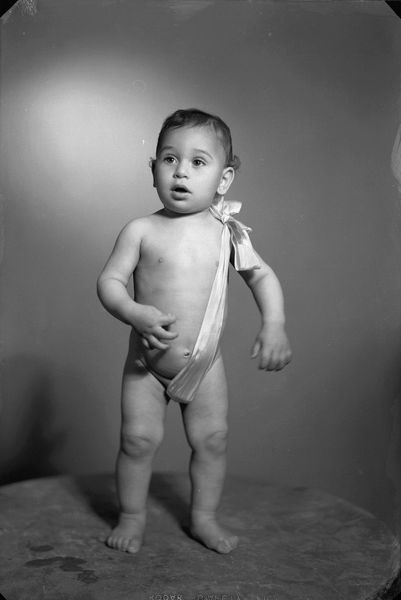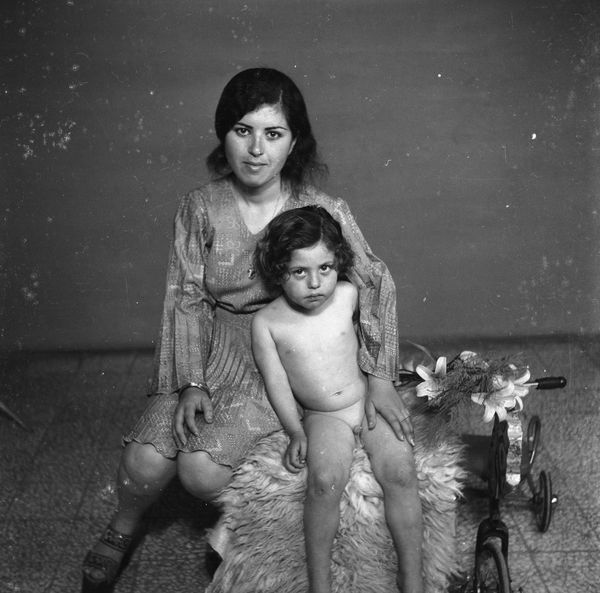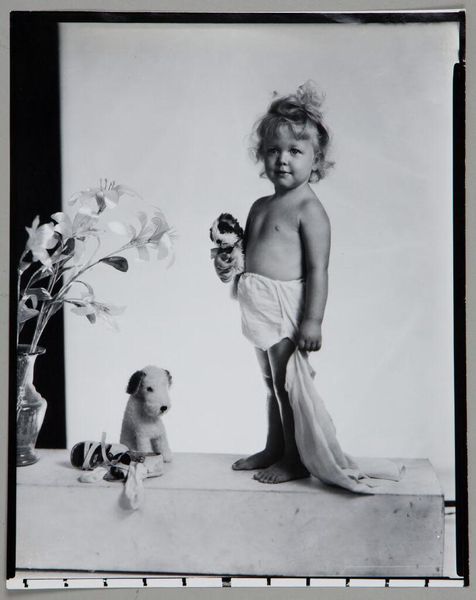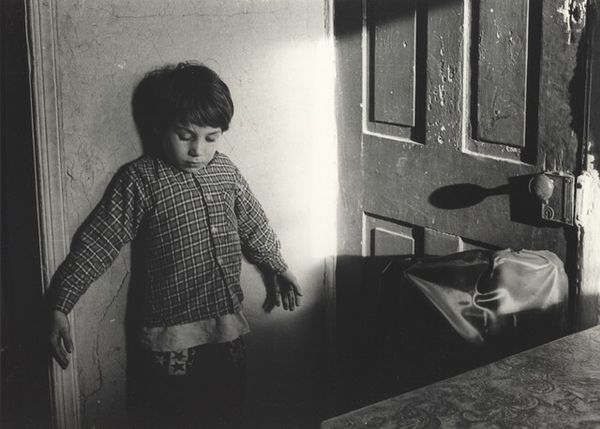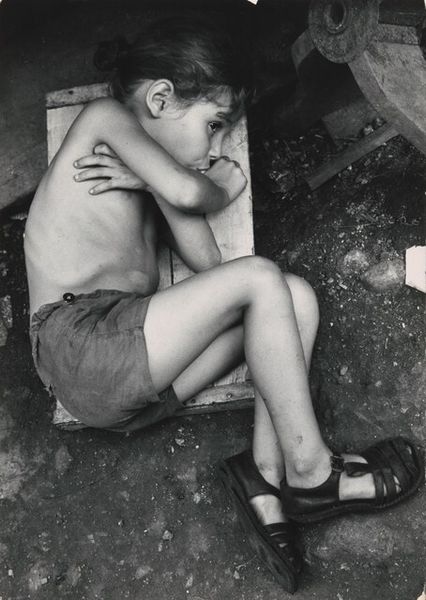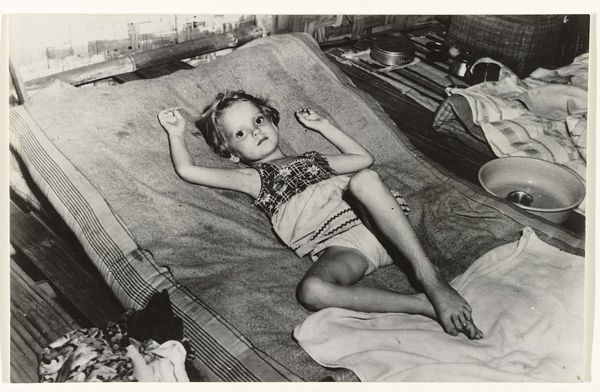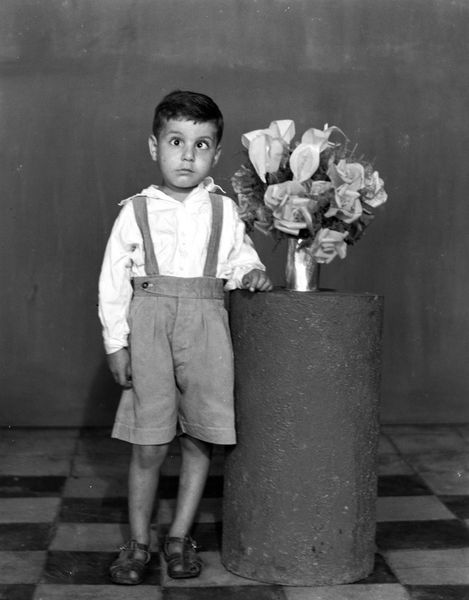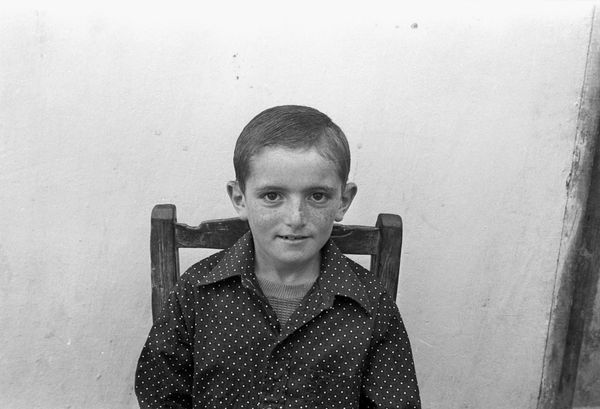
Dimensions: image: 191 x 290 mm
Copyright: © Akram Zaatari, courtesy Hashem el Madani and Arab Image Foundation, Beirut | CC-BY-NC-ND 4.0 DEED, Photo: Tate
Curator: This photograph, attributed to Hashem el Madani and part of Akram Zaatari's project, captures an intimate scene from a Lebanese home in Saida between 1948 and 1953. Editor: There's a striking vulnerability. The child's direct gaze, juxtaposed with the awkward pose and oversized shoes, creates a palpable sense of unease, doesn't it? Curator: Indeed. The amulet around the child's neck could signify protection, a charm against the "evil eye"—a potent symbol in Lebanese culture. It is interesting how Madani chose to portray children in his work. Editor: These images also remind us of how photographic studios served as vital spaces for constructing identity and preserving memory in mid-century Lebanon. And now it can be seen at Tate Collections. Curator: Precisely. And how this intimate portrait, seen through a contemporary lens, invites reflection on the complexities of representation and cultural heritage. Editor: I find the contrast between the innocence of the subject and the formal composition deeply unsettling. A potent reminder of the power dynamics inherent in the act of looking.
Comments
tate 7 months ago
⋮
http://www.tate.org.uk/art/artworks/zaatari-anonymous-clients-home-saida-lebanon-1948-53-hashem-el-madani-p79425
Join the conversation
Join millions of artists and users on Artera today and experience the ultimate creative platform.
tate 7 months ago
⋮
This work is one of a series of black and white silver gelatin photographs of varying sizes that are collectively titled Objects of study/The archive of studio Shehrazade/Hashem el Madani/Studio Practices. All of the photographs were taken by the Lebanese commercial photographer Hashem el Madani between 1948 and 1982 and compiled into the present group, 117 of which are in Tate’s collection, by the Lebanese artist Akram Zaatari. All of the photographs include people, either alone, in pairs or in small groups, and most were taken in Madani’s studio, although some were shot outside and in his subjects’ homes. The series features men and women and covers a wide age range from babies to elderly people. Almost all of the sitters assume poses deliberately for the camera, sometimes accompanied by props or costumes, and most gaze directly towards the lens. Many of the pictures show subjects interacting in various ways, including embracing, kissing and acting out scenes, such as a mock wrestling match. The photographs are mostly tightly cropped, with the sitter or sitters filling most of the frame, although in some cases the figures are positioned further away from the camera, for instance when shown sitting at a table or standing behind a chair. The photographs tend to have sparse backgrounds, often dominated by a blank posterior wall. They are mounted on white paper, displayed in plain white frames and signed on the back by Madani. Many of them have been organised into categories by Zaatari – such as a group featuring men dressed as Syrian resistance fighters and a collection depicting newly married couples – while the rest are presented individually. Zaatari has stated that although he prefers these groups to be displayed together, this is not a requirement (Akram Zaatari, email to Rachel Taylor, 24 April 2008, Tate Acquisition file).
